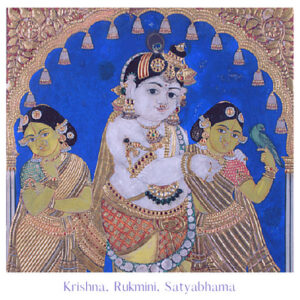Sketching and embellishments – Thanjavur style

Transcending a singular medium, Thanjavur art brilliantly combines sketching, painting, bas relief and embellishments with gold foil, semi-precious stones and mirrors to produce an unforgettable composition of aesthetic elegance.
The origin of this style lies in the fabled Vijayanagara Empire which included large areas of present-day Karnataka, Andhra Pradesh and Tamil Nadu. Thanjavur was a part of the kingdom. Though the themes remain predominantly religious, the social and cultural milieus in which these paintings are situated make them unique. Royalty and the gods are depicted with absolute pomp and show. The ornamentation and dress of the main figures offer a rich panoply to view.

Many of the traditional Indian artists were also later patronised by Europeans to paint in the so-called “Company Style”. While no specific character or technique marked out the Company school of paintings, it can be understood to mean the large body of paintings painted by Indian artists in a mixed Indo-European style which would appeal to the Europeans employed by the various East India Companies. Because Colonialism.

Artists of the Thanjavur School keep traditional practices, methods and themes alive. Their ancestors migrated into Thanjavur from Telugu-speaking areas during the Nayak period of the city’s history and they remain rooted in their language and culture. Although the present day artists have retained the traditional practices and methods, they have also adapted to the methods and materials, changing with time. Probably why this art unlike the other ancient arts has survived and evolved. Most deity paintings in Indian households tend to be Thanjavur style, can you confirm!?
